Hol Dir den wöchentlichen SPARTANAT-Newsletter.
Dein Bonus: das gratis E-Book von SPARTANAT.
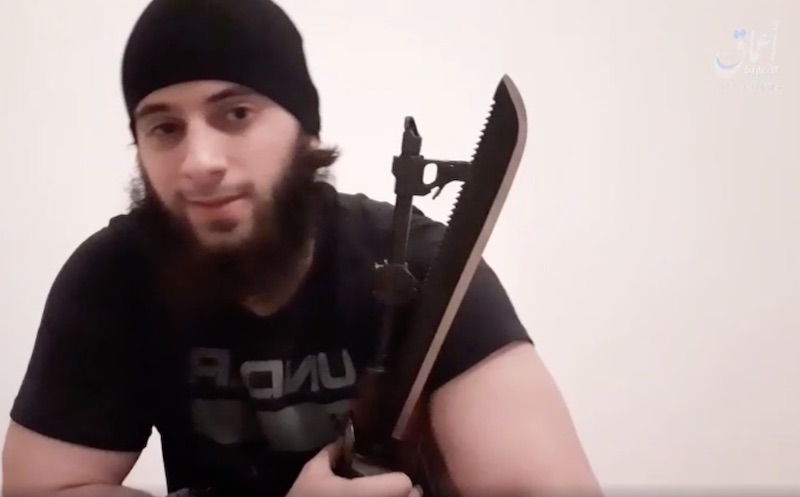
WIEN: Terror hätte verhindert werden können
Am Montag der schwere Terroranschlag in Wien, am Mittwoch bereits ein handfester Skandal: Der islamistische Täter war den Behörden bekannt, aber er rutschte anscheinend mehrmals durch den Überwachungsradar, seit er aus dem Gefängnis entlassen wurde. Trotz Warnung aus der Slowakei folgten keine Konsequenzen.
Am Montag der schwere Terroranschlag von Wien, am Mittwoch bereits ein handfester Skandal: der islamistische Täter war den Behörden gut bekannt, scheinbar ist er aber seit seiner Haftentlassung mehrfach durch das Radar der Überwachung gerutscht. Höhepunkt des Komplettversagens: Im Juli 2020 hat der spätere Attentäter in der Slowakei versucht Kalaschnikow-Munition zu kaufen. Der slowakische Geheimdienst meldete das nach Österreich, dort hat das keine Folgen gezeitigt.
Der amtsbekannte Täter
20 Jahre, in Österreich geboren, Doppelstaatsbürgerschaft mit Nordmazedonien, albanische Nationalität. Kujtim F. war Österreichs Sicherheitsbehörden als Islamist bestens bekannt: Er wollte zuerst nach Afghanistan zum Dschihad, scheiterte aber am Visum. Dann hat er versucht sich dem IS in Syrien anschließen. Kujtim wurde aus einem Safe House in der Türkei heraus verhaftet, seine Reise war damit aber nicht zu Ende, wie wir heute wissen. In Österreich ist er deshalb zu 22 Monaten Haft verurteilt worden. „Ich hätte das niemals für möglich gehalten, dass er zu einem Attentäter wird“, sagt sein ehemaliger Strafverteidiger. Am 5. Dezember 2019 war der Vorbestrafte dann auf Bewährung entlassen worden. Denn er galt als junger Erwachsener und für die gelten in Österreich die Privilegien des Jugendgerichtsgesetzes (JGG).
Kujtim F. wurde vom Verein DERAD betreut worden, der auf die Deradikalisierung muslimischer Jugendlicher spezialisiert ist und mit dem Wiener Justizministerium zusammen arbeitet. Für DERAD galt er nicht als erfolgreich deradikalisiert, sonst wäre er aus der Betreuung entlassen worden. Dem Justizministerium wiederum war nicht bekannt, dass er etwa versucht hat Munition zu beschaffen, sonst wäre er wegen Verstoß gegen die Bewährungsauflagen sofort wieder in Haft genommen worden. Warum der verurteilte Terrorist noch immer eine Doppelstaatsbürgerschaft hatte, ist nicht geklärt. Gelebt hat er übrigens von 917 Euro Sozialgeld – sozusagen finanziert vom Feind.
 Neun Minuten hat der Terrorlauf von Kujtim F. durch das „Bermuda-Dreieck“, das Vergnügungsviertel im 1. Wiener Gemeindebezirk gedauert. Mit dabei die M70 Zastava Kalaschnikow, eine Tokarev Pistole und eine Mache (wie im Aufmacherbild zu sehen). Vorbild war wohl der Anschlag von Paris, einfach in die Lokale schießen und so viele Menschen wie möglich töten. Kujtims Bilanz: 4 Tote, 22 Verletzte, davon 14 mit Schusswunden. Die Wiener Polizei hat sehr schnell reagiert. Nach drei Minuten kam es zum ersten Schusswechsel mit der Polizei – bei der ein Polizist verletzt wurde. Noch fünf weitere Male kam es zu kurzen Feuergefechten mit der Exekutive. Am Ruprechtsplatz stößt der Täter in der neunten Minute seines Todeslaufes – man sieht ihn meistens im Laufschritt unterwegs– auf eine schnell herbeigeeilte Bereitschaftsstreife der WEGA, des SEKs der Wiener Polizei, und wird neutralisiert. Entschärfungsspezialisten wurden gerufen um einen offensichtlichen Sprengstoffgürtel vom Körper des Toten zu entfernen. Er entpuppte sich als Attrappe. Der Tote hat noch über 100 Schuss Munition dabei …
Neun Minuten hat der Terrorlauf von Kujtim F. durch das „Bermuda-Dreieck“, das Vergnügungsviertel im 1. Wiener Gemeindebezirk gedauert. Mit dabei die M70 Zastava Kalaschnikow, eine Tokarev Pistole und eine Mache (wie im Aufmacherbild zu sehen). Vorbild war wohl der Anschlag von Paris, einfach in die Lokale schießen und so viele Menschen wie möglich töten. Kujtims Bilanz: 4 Tote, 22 Verletzte, davon 14 mit Schusswunden. Die Wiener Polizei hat sehr schnell reagiert. Nach drei Minuten kam es zum ersten Schusswechsel mit der Polizei – bei der ein Polizist verletzt wurde. Noch fünf weitere Male kam es zu kurzen Feuergefechten mit der Exekutive. Am Ruprechtsplatz stößt der Täter in der neunten Minute seines Todeslaufes – man sieht ihn meistens im Laufschritt unterwegs– auf eine schnell herbeigeeilte Bereitschaftsstreife der WEGA, des SEKs der Wiener Polizei, und wird neutralisiert. Entschärfungsspezialisten wurden gerufen um einen offensichtlichen Sprengstoffgürtel vom Körper des Toten zu entfernen. Er entpuppte sich als Attrappe. Der Tote hat noch über 100 Schuss Munition dabei …
Das Chaos in der Innenstadt hält noch Stunden an – fog of war –, weil nicht klar ist, ob es Mittäter gibt, die unterwegs sind oder ob der Attentäter allein unterwegs war. Meldungen verorten Vorkommnisse in viel größeren Gebieten der Innenstadt, de facto ist der Täter aber allein unterwegs, die Gegend im Bemuda-Dreieck nach Opfern durchstreifend. Noch am nächsten Tag warnt der Innenminister davor, die Innenstadt zu besuchen …
Bei der medialen Aufarbeitung des Attentats wird schnell klar, dass es sich bei dem toten Attentäter um keinen Unbekannten handelt. Und dass letztendlich ziemlich sicher der Attentäter schon vor der Tat hätte gestoppt werden können.
Beobachtet oder nicht?
Der ehemalige Innenminister Herbert Kickl (FPÖ) wirft deswegen dem aktuellen Innenminister Karl Nehammer (ÖVP) im Zusammenhang mit dem Terroranschlag in Wien „Fehlinformation“ vor. Denn entgegen seinen ersten Aussagen seien der Täter wie auch sein Umfeld sehr wohl unter Beobachtung des Verfassungsschutzes gestanden. Es stelle sich die Frage, warum der Verfassungsschutz nicht „schon längst zugegriffen“ habe.
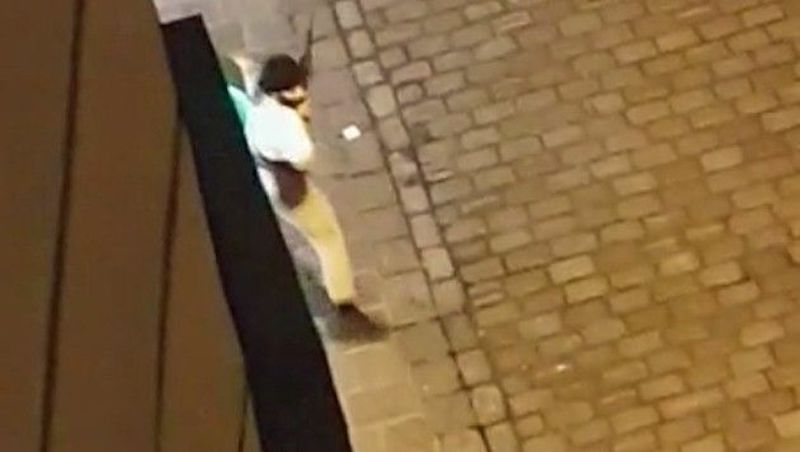 Kickl verwies am Mittwoch auf Informationen, wonach der Täter unter Beobachtung des Verfassungsschutzes stand – und zwar ab dem Zeitpunkt unmittelbar nach seiner Haftentlassung bis hin zu seiner Tat am Montagabend. Es gab zwei verdeckte Ermittlungs-Operationen mit den Namen „ANSA“ und „ZULU“. Erstere hätte Anfang 2020 begonnen und der Beobachtung der Islamistenszene in Wien „inklusive des späteren Attentäters“ gedient. „Er war demnach bereits kurz nach seiner Haftentlassung wieder am Radar des Verfassungsschutzes“, sagte so der Ex-Innenminister. Bei der zweiten Operation, also „ZULU“, sei es um eine Islamisten-Gruppe im Raum St. Pölten gegangen, wo am Tag nach dem Attentat auch sofort Hausdurchsuchungen stattgefunden haben.
Kickl verwies am Mittwoch auf Informationen, wonach der Täter unter Beobachtung des Verfassungsschutzes stand – und zwar ab dem Zeitpunkt unmittelbar nach seiner Haftentlassung bis hin zu seiner Tat am Montagabend. Es gab zwei verdeckte Ermittlungs-Operationen mit den Namen „ANSA“ und „ZULU“. Erstere hätte Anfang 2020 begonnen und der Beobachtung der Islamistenszene in Wien „inklusive des späteren Attentäters“ gedient. „Er war demnach bereits kurz nach seiner Haftentlassung wieder am Radar des Verfassungsschutzes“, sagte so der Ex-Innenminister. Bei der zweiten Operation, also „ZULU“, sei es um eine Islamisten-Gruppe im Raum St. Pölten gegangen, wo am Tag nach dem Attentat auch sofort Hausdurchsuchungen stattgefunden haben.
Die verschlampte Warnung
Dass der Täter unter Beobachtung des Verfassungsschutzes gestanden ist, zeigt sich für Kickl auch aus dem Text der Beantragungen der Hausdurchsuchungen nach dem Terroranschlag. „Aus denen geht unmissverständlich hervor, dass sowohl Täter wie Umfeld am Radar (des Verfassungsschutzes, Anm.) gestanden sind.“ Darin habe es geheißen, dass alle Personen „einschlägig bekannt“ seien – und „wiederkehrend an Orten (Moscheen)“ verkehren, die der islamistischen Szene zuzuordnen sind.
„Ausdrücklich wird in dem Ansuchen zur Hausdurchsuchung auch angeführt, dass vertrauliche Infos vorliegen, dass der spätere Attentäter gemeinsam mit einer andern weiteren Person Mitte Juli 2020 in die Slowakei gereist sein soll, um sich Munition für ein Sturmgewehr AK 47 zu besorgen“ – eine bereits an die Öffentlichkeit gedrungene Information. Ein Originaldokument der slowakischen Sicherheitsbehörde würde zeigen, dass es sehr wohl einen intensiven Informationsaustausch zwischen verschiedenen Ländern gegeben habe – „aber auch, dass die Slowaken diese Aktivitäten dort beobachte haben“ und in Österreich diesbezüglich nachgefragt hätten, „was das für Leute sind – und die bekommen eine sehr ausführliche Auskunft darüber, was das für Personen waren“, so Kickl.
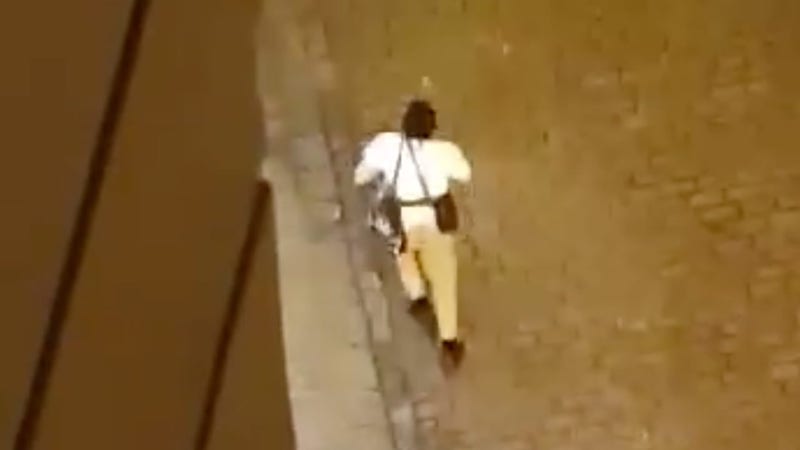 Daher spreche alles dafür, dass der spätere Attentäter nach seiner Haftentlassung beobachtet wurde. Das wirft die Frage auf, warum mit diesen Erkenntnissen nicht versucht wurde, die bedingte Entlassung aufzuheben. Es war klar das Kujtim F. kein „Deradikalisierter“ gewesen sei. Dazu kommt das offensive Bemühen sich Kalaschnikow-Munition zu besorgen. Was nur Sinn macht, wenn wer eine Kalaschnikow hat oder haben will. Warum also hat der Verfassungsschutz nicht schon längst zugegriffen? Kickls Antwort, die in Österreich gerade sehr ernsthaft diskutiert wird: „Es stellt sich die Frage, ob denn dieses Attentat durch ein verantwortungsvolle Vorgangsweise der Zuständigen nicht hätte verhindert werden können. Aus unserer Sicht ist das so.“
Daher spreche alles dafür, dass der spätere Attentäter nach seiner Haftentlassung beobachtet wurde. Das wirft die Frage auf, warum mit diesen Erkenntnissen nicht versucht wurde, die bedingte Entlassung aufzuheben. Es war klar das Kujtim F. kein „Deradikalisierter“ gewesen sei. Dazu kommt das offensive Bemühen sich Kalaschnikow-Munition zu besorgen. Was nur Sinn macht, wenn wer eine Kalaschnikow hat oder haben will. Warum also hat der Verfassungsschutz nicht schon längst zugegriffen? Kickls Antwort, die in Österreich gerade sehr ernsthaft diskutiert wird: „Es stellt sich die Frage, ob denn dieses Attentat durch ein verantwortungsvolle Vorgangsweise der Zuständigen nicht hätte verhindert werden können. Aus unserer Sicht ist das so.“
Razzia in der Islamistenszene
Ein weiteres, überaus spannendes Fakt ist, dass ausgerechnet in frühen Morgenstunden des 3. November – einen Tag nach dem Attentat – sei unter dem Decknamen „RAMSES“ eine große Operation inklusive zahlreicher Hausdurchsuchungen in der Islamistenszene angesetzt gewesen wären. Dies sei auch der Grund dafür gewesen. War der Attentäter davor gewarnt? Hat er deswegen am Montag Abend noch schnell zugeschlagen, bevor er aufgedeckt hätte werden können. Ein nicht unspannendes Indiz ist, dass in der nach dem Attentat durchsuchten Wohnung Kujtim F.s scheinbar die nicht fertig gebastelten Sprengkörper gefunden wurden, die die beim Anschlag getragene Sprengstoffgürtel-Atrappe befüllen hätten sollen.
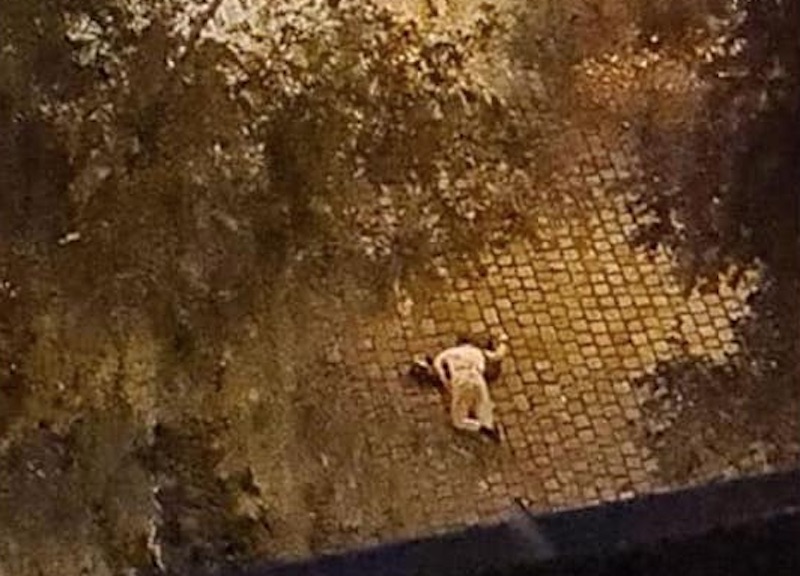 „Man kann an einen Zufall glauben, ich denke nicht daran“, so Kickl. Für ihn stelle sich die Frage, ob diese Razzia möglicherweise verraten wurde. „Gibt es vielleicht wieder einmal eine undichte Stelle im Bereich des Verfassungssschutzes? Und hat dieser Täter vielleicht deswegen zugeschlagen, weil er davon etwas erfahren hat?“ Der Generaldirektor für öffentliche Sicherheit, Franz Ruf, dementierte am nächsten Tag zuerst, es habe keine vorbereitete Operation gegen einen der Festgenommenen oder den Attentäter gegeben. Wundersam, da man von einer Mobilisierung der COBRA in der Vorwoche gehört hatte. Am Tag später bestätigt der Chef der Direktion für Spezialeinheiten (DSE) im Innenministerium, Bernhard Treibenreif, in einer Geschichte mit der Tageszeitung „Kurier“, dass es RAMSES am Tag nach dem Attentat doch gegeben hätte und wirft Ex-Innenminister Herbert Kickl durch Erwähnung der Aktion „ein großes Sicherheitsrisiko“ zu sein. Es seien Zugriffe an 50 Adressen geplant gewesen. „Solche sensiblen Informationen an die Öffentlichkeit zu tragen, gefährdet jeden unserer Beamten im Einsatz. Das ist unverantwortlich“, sagt Treibenreif. Allerdings: Zumindest die Zahl der Zugriffe hatte Kickl nicht erwähnt …
„Man kann an einen Zufall glauben, ich denke nicht daran“, so Kickl. Für ihn stelle sich die Frage, ob diese Razzia möglicherweise verraten wurde. „Gibt es vielleicht wieder einmal eine undichte Stelle im Bereich des Verfassungssschutzes? Und hat dieser Täter vielleicht deswegen zugeschlagen, weil er davon etwas erfahren hat?“ Der Generaldirektor für öffentliche Sicherheit, Franz Ruf, dementierte am nächsten Tag zuerst, es habe keine vorbereitete Operation gegen einen der Festgenommenen oder den Attentäter gegeben. Wundersam, da man von einer Mobilisierung der COBRA in der Vorwoche gehört hatte. Am Tag später bestätigt der Chef der Direktion für Spezialeinheiten (DSE) im Innenministerium, Bernhard Treibenreif, in einer Geschichte mit der Tageszeitung „Kurier“, dass es RAMSES am Tag nach dem Attentat doch gegeben hätte und wirft Ex-Innenminister Herbert Kickl durch Erwähnung der Aktion „ein großes Sicherheitsrisiko“ zu sein. Es seien Zugriffe an 50 Adressen geplant gewesen. „Solche sensiblen Informationen an die Öffentlichkeit zu tragen, gefährdet jeden unserer Beamten im Einsatz. Das ist unverantwortlich“, sagt Treibenreif. Allerdings: Zumindest die Zahl der Zugriffe hatte Kickl nicht erwähnt …
Dabei steht das Innenministerium mit seinen Terrorismusbekämpfer vor einem handfesten Skandal: das Attentat wäre zu verhindern gewesen, wenn man den radikalislamischen Munitionskäufer nach der Warnung aus der Slowakei aus dem Verkehr gezogen hätte – und dabei vermutlich seine Vorbereitungen für die Tat aufgeflogen wären.
Bleibt zu hoffen, dass jetzt nicht unaufgeklärt bleibt. Nach einem Bericht der DW in mazedonischer Sprache sucht die Polizei nach weiteren vier Personen: zwei österreichische Staatsbürger, deren Eltern ebenfalls aus Mazedonien stammen und zwei Personen aus dem Kosovo. In der Schweiz gab es zwei Hausdurchsuchungen bei zwei bekannten Islamisten, in Österreich 18 mit 14 Verhaftungen. Wien, das ist bekannt, ist auch einen Drehscheibe für die vitale Dschihadistenszene des Balkans. Auch der Islamische Staat hat in der Bundeshauptstadt seine Anhänger. Der Kampfname des Attentäters bezeichnet ihn ja auch als „Abu Dagnah Al-Albany“, den Albaner. Das verwendete Sturmgewehr war eine jugoslawische M70 Zastava Kalaschnikow.
PROBLEMZONE GEHEIMDIENST: Wie kaputt ist das BVT in Österreich?
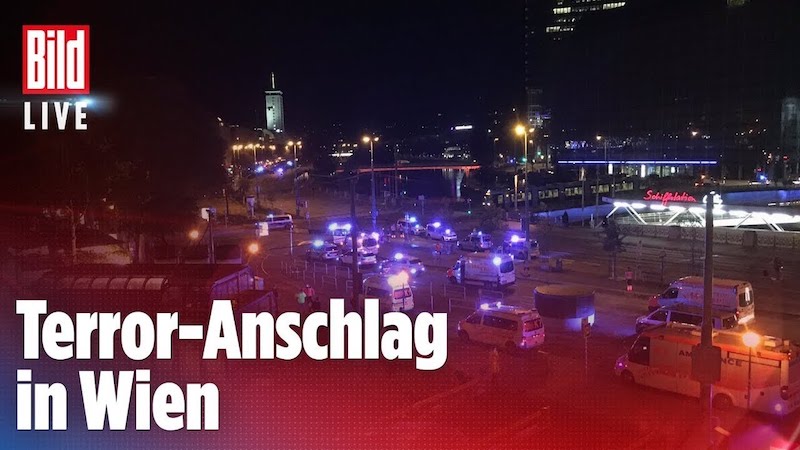
Viel kritisiert: Bestimmte Medien habe versucht so live wie möglich vom Anschlag in Wien zu berichten.
SPARTANAT ist das Online-Magazin für Military News, Tactical Life, Gear & Reviews.
Schickt uns eure News: [email protected]
Werbung
Hol Dir den wöchentlichen SPARTANAT-Newsletter.
Dein Bonus: das gratis E-Book von SPARTANAT.


